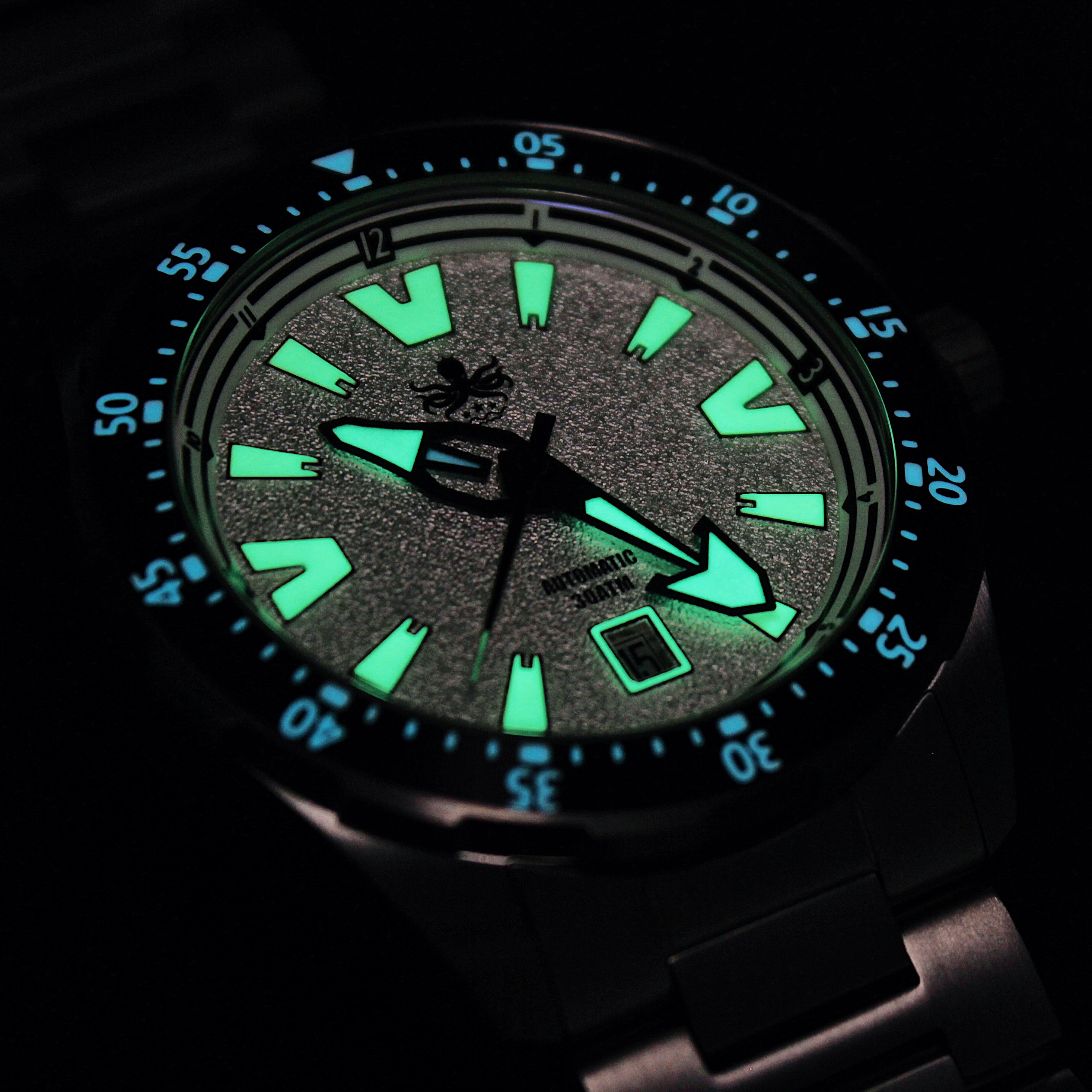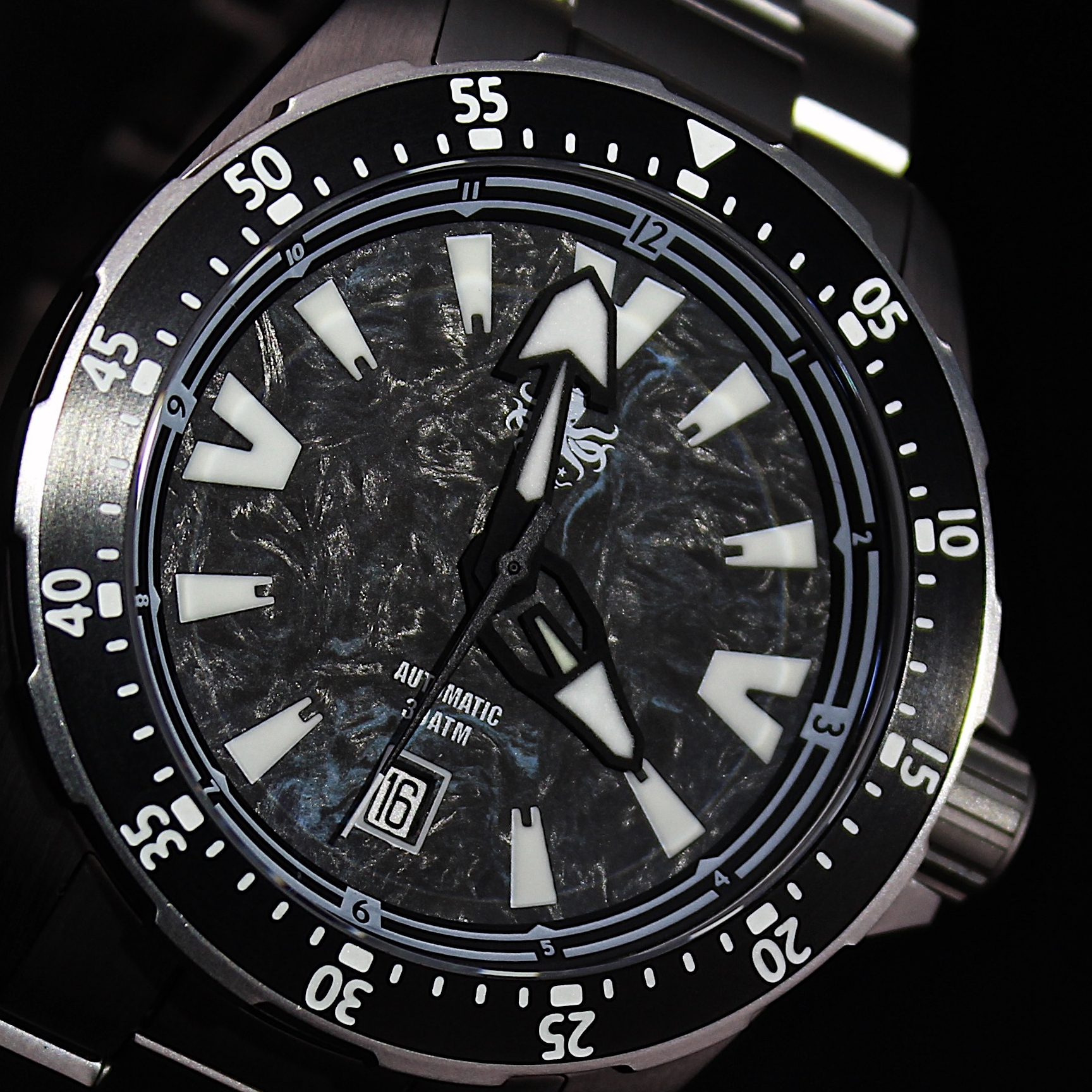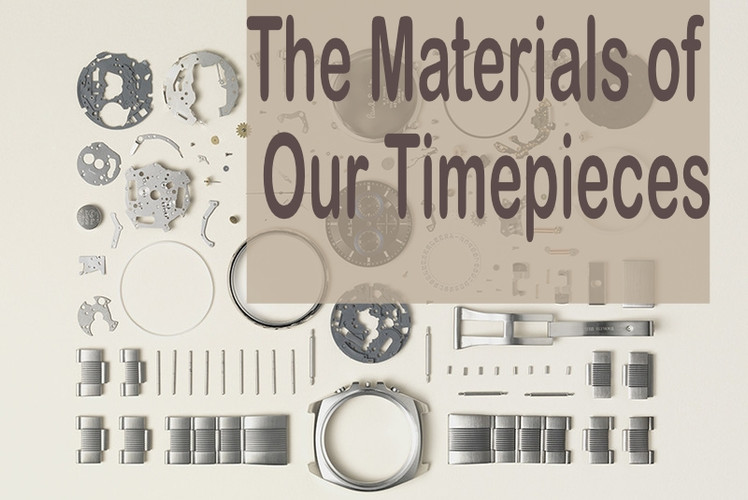Posted by Phoibos on 18th Oct 2023
THE MATERIALS OF OUR TIMEPIECES
As a reliable diver watch, it must be robust and rugged enough to withstand any tough environments. To accompany you in your daily challenges and occasional adventures, Phoibos uses high-performance materials to strike a balance between aesthetics and resistance. As you explore the world of Phoibos Watches, you can find many finest details about the material used in our watchmaking
1. Stainless Steel
316L stainless steel is found primarily in our watch cases and bracelets. It is often known as marine grade or medical-grade stainless steels. Stainless Steel 316 has superior corrosion resistance properties as well as elevated temperature prolong performance potential. In addition to iron, this iron-based alloy is also composed of a low carbon content, which makes this steel resistant and stainless. Its chromium content also gives it a shine that lasts over time. The low nickel content increases the resistance to acids but is harmless for the wearing comfort, because it is firmly bound in the alloy and is not released to the skin. Stainless steel 316 L is therefore very skin-friendly.

2. Titanium
Titanium Grade 2 is a pure alpha titanium and is the most widely used titanium alloy in all product forms for industrial service because of its moderate strength and excellent corrosion resistance and formability. This titanium T2 is only used in our Apollo collection up to now and is made into the whole watch including the case, bracelet, bezel insert (with Diamond-like carbon treated), clasp and crown. Compared with the original 316L stainless steel, titanium T2 will reduce 30% in the watch weight, meaning it feels considerably lighter than a stainless steel watch and more comfortable on the wrist. This aerospace-grade titanium is also coated with an anti-scratch Titanium coating rated as HV1200 that is 5 times harder than 316L stainless steel to increase the hardness of the watch surface. All bring up a watch that is both light and durable enough for daily wear or any adventure.

3.Bronze
Bronze is mainly used in some of our iconic timepieces coming with leather straps, like Eagle Ray, Leviathan, Proteus, and so on. Due to its natural chemical properties, bronze has been the material for nautical equipment for centuries. Bronze watches not only offer supreme durability and robustness but also are innately anti-corrosive, anti-magnetic, long-lasting, resistant to seawater, and harder than stainless steel. Made with top-notch naval grade Bronze (CuSn8), all of our bronze timepieces are aimed to be part of any of your adventures at sea or land. Bronze undergoes superficial oxidation naturally depending on the level of moisture exposure and type of wear and thus gives each individual wearer a unique pattern of the watch. In addition, the caseback is made of stainless steel when considering allergies to bronze for some people. After getting beautiful patinas and shining light fade away, the aged bronze would add the vintage flair pairing with the genuine leather strap.

4. Sapphire Crystal
All of our watch glasses are made of sapphire crystal which is usually the default choice for higher-end watches. Sapphire is a tough optical material resistant to chemicals, scratching, and high pressure in many diverse environments and has exceptional transparency. Most sapphire glass found in wristwatches is actually synthetic (man-made) sapphire produced in a laboratory rather than naturally occurring material. You will struggle to scratch a sapphire crystal with anything other than a piece of diamond. A drawback of sapphire crystal is that it is highly reflective. To reduce glare and improve legibility, an anti-reflective (AR) coating is applied to the inside surface of our sapphire crystals. Why isn’t it applied on both sides of the crystal? The sapphire crystal is highly scratch-resistant but the coating itself is not. An AR coating on the outside would be scratched and fade off after time. That will make the crystal look vulnerable and dirty. Therefore, AR coating on the inside is enough to limit reflection to a level that is acceptable for everyday use.

5. DLC (Diamond-like carbon)
In the specification of some models, you can find the term “DLC” standing for Diamond-Like Carbon. It is a class of amorphous carbon material that displays some of the typical properties of diamond. DLC is usually applied as coatings to other materials that could benefit from some of those properties. The value of such coatings accrues from their ability to provide some of the properties of diamond to surfaces of almost any material. The primary desirable qualities are hardness, wear resistance, and slickness. Our DLC coating is designed to be more resistant to scratches and scuffs while keeping your watch looking great. It also allowed us to create watches with a unique total black style.

6. Super-LumiNova
Super-LumiNova is based on a non-radioactive and non-toxic formula consisting of strontium aluminate. This is one of several powerful luminous pigments available in the watch industry today. Almost all of our watch hands, indices and markings are treated with the 15 layers of Super-LumiNova. It needs to be charged by sunlight or artificial light like a small florescent bulb. Once charged, it glows very brightly and offers perfect legibility in darkness.

7. Ceramic
Most of our bezel inserts are made of high-grade ceramic that is celebrated for its high hardness, offering superior resistance to scratches and corrosion than other materials. They come with industrial 3M™ adhesive backing already applied, so they are very easy to replace without complicated operation.

8. Mother of Pearl(MOP)and Abalone
These organic materials from the ocean are mainly used to make dials for our iconic watches like Wave Master, Voyager and women's watches Sea Nymph. These dials will create the particular shine of nacre called iridescence. A rainbow-like brilliance looms on the dial when it catches incoming light from different angles, which enhances its charm and grace a little further.

9. Carbon Fiber
The carbon fiber dials can be found in our Apollo collection (ref.PY041). This material has a strong lightweight game. Despite being light, the carbon fiber dial possesses qualities of high stiffness, durability and corrosion resistance. In our Apollo series, carbon fiber dials are designed in an unusual camo pattern to deliver the unique.

10. Malachite Stone
The enuine malachite stone with its unique texture is the highlight of our Green Voyager (Ref.PY035A&PY043A). The precision hand-fitted genuine stone disc serves as a dial, whose natural, vitalizing green tones fascinate anew with every incidence of light and make each watch unique.


